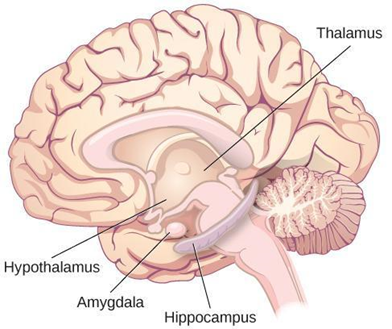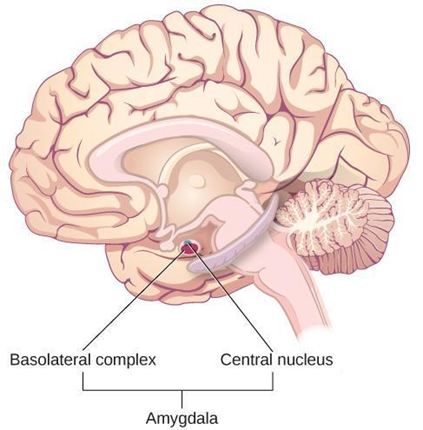15.3: La biología de las emociones
- Page ID
- 149664
Buceo en la Biología Subyacente del Desarrollo Emocional
El sistema límbico, que es el área del cerebro involucrada en la emoción y la memoria Figura\(\PageIndex{1}\)), incluye el hipotálamo, el tálamo, la amígdala y el hipocampo. El hipotálamo activa el sistema nervioso simpático de cualquier reacción emocional. El tálamo sirve como centro de retransmisión sensorial cuyas neuronas se proyectan hacia la amígdala y las regiones corticales superiores para su posterior procesamiento. La amígdala juega un papel en el procesamiento de la información emocional (Fossati, 2012). El hipocampo es el área que integra la experiencia emocional con la cognición (Femenía, Gómez-Galán, Lindskog, & Magara, 2012) [1].

Amígdala
La amígdala ha recibido mucha atención por parte de los investigadores en la comprensión de las bases biológicas de las emociones, especialmente el miedo y la ansiedad (Blackford & Pine, 2012; Goosens & Maren, 2002; Maren, Phan, & Liberzon, 2013).

Hipocampo
El hipocampo también está involucrado en el procesamiento emocional. Al igual que la amígdala, la investigación demuestra que la estructura y función del hipocampo están vinculadas a una variedad de trastornos del estado de ánimo y ansiedad. [1]
[1] Emotion and Motivation se comparte bajo una licencia CC BY 4.0 y fue escrito, remezclado y/o comisariado por OpenStax

